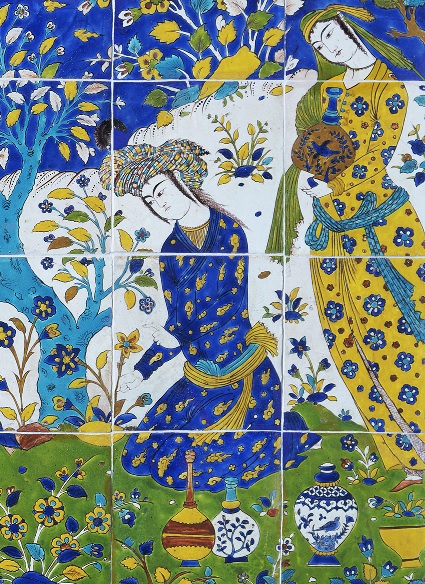Earliest depiction of #Simurgh/ Senmurv (سیمرغ) in the world I am aware of: sealing, Excavated @ Bandian (بندیان), 5 C CE (i.e., 401 - 500), possibly reign of Bahram V
Firmly establishing this motif as #Sasanian. Now @ Great Museum of Khorasan (موزه بزرگ خراسان)
⤵️
Firmly establishing this motif as #Sasanian. Now @ Great Museum of Khorasan (موزه بزرگ خراسان)
⤵️

Various seals & other objects were found @ Bandian. As far as I know, this particular one hasn't been fully published.
Some of the other sealings & seals from Bandian
⤵️

Some of the other sealings & seals from Bandian
⤵️


If anyone has a better photo of this sealing I would appreciate if you could share.
The iconography reminds me of glass plaques @corningmuseum, Sasanian or slightly post-Sasanian
⤵️


The iconography reminds me of glass plaques @corningmuseum, Sasanian or slightly post-Sasanian
⤵️



I've talked about Simurgh a lot before. I've noted that Simurgh was a mythological bird who could talk and do a lot of other things, so we wouldn't expect it to just be a bird as Compareti keeps insisting.
I've also said any "scholar" who ignores unfavourable sources
⤵️
I've also said any "scholar" who ignores unfavourable sources
⤵️
cannot and should not be taken seriously. These include mention of Simurgh in Bundahishn & Zadspram's book, as a composite creature which lactates/ gives milk
The other important dates are:
1: Taqe Bostan: built during reign of Khosrow II & before 628 CE, i.e,
⤵️
The other important dates are:
1: Taqe Bostan: built during reign of Khosrow II & before 628 CE, i.e,
⤵️

before Afrasiab Murals in Sogdiana (~ 648-651 CE)
As well as this very clearly Sasanian ewer with Senmurvs, 500-600 CE, Found in the Kharkov region, Ukraine
Among many other depictions of Simurgh I've talked about before.
⤵️
As well as this very clearly Sasanian ewer with Senmurvs, 500-600 CE, Found in the Kharkov region, Ukraine
Among many other depictions of Simurgh I've talked about before.
⤵️

It's also possible this is a sort of Sasanian "dragon" as I discussed before, but that still does not rule it out as depiction of famous composite creature Simurgh.
Photo: Simurgh on clothing of ambassador @ Afrasiab
Photo: Simurgh on clothing of ambassador @ Afrasiab

• • •
Missing some Tweet in this thread? You can try to
force a refresh

 Read on Twitter
Read on Twitter



























